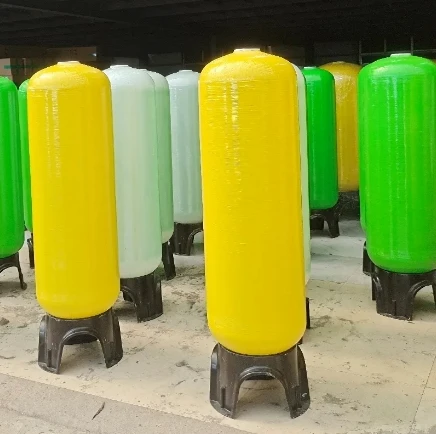loading...
- No. 9, Xingyuan South Street, Dongwaihuan Road, Zaoqiang County, Hengshui, Hebei, China
- admin@zjcomposites.com
- +86 15097380338
- Welcome to visit our website!
frp drain channel
Exploring the Importance of FRP Drain Channels in Modern Infrastructure
In today's rapidly developing world, infrastructure plays a pivotal role in ensuring the effective functioning of urban environments. Among the various components that contribute to infrastructure efficiency, drainage systems are critically important. As urban areas continue to expand, the management of stormwater and wastewater has become a pressing issue. One innovative solution that has emerged is the use of Fiber-Reinforced Polymer (FRP) drain channels. This article delves into the significance of FRP drain channels, highlighting their advantages and applications in modern infrastructure.
Understanding FRP Drain Channels
Fiber-Reinforced Polymer (FRP) is a composite material comprised of a polymer matrix reinforced with fibers, such as glass or carbon. This combination results in a material that boasts high strength-to-weight ratios, corrosion resistance, and durability. FRP drain channels are specially designed conduits that facilitate the efficient drainage of water, preventing flooding and water accumulation in various settings.
Advantages of FRP Drain Channels
1. Corrosion Resistance One of the most significant advantages of FRP materials is their resistance to corrosion. Traditional materials like concrete and metal can degrade over time due to exposure to harsh chemicals and environmental conditions. FRP drain channels, on the other hand, remain unaffected by most corrosive substances, ensuring a longer lifespan and reduced maintenance costs.
2. Lightweight Nature The lightweight characteristics of FRP make installation easier and more cost-effective. Unlike heavier materials that require specialized equipment for transport and installation, FRP can be handled by a smaller workforce and requires less machinery, leading to reduced labor costs and project timelines.
3. High Strength Despite their lightweight properties, FRP drain channels possess remarkable strength. This allows them to withstand significant loads without deforming or breaking, making them ideal for use in roads, parking lots, and other high-traffic areas.
4. Customizability FRP materials can be molded into various shapes and sizes, allowing for customization to meet specific drainage needs. This flexibility enables engineers to design drain channels that fit perfectly into any landscape or infrastructure plan, optimizing their functionality.
frp drain channel

5. Sustainability As environmental concerns grow, the need for sustainable materials becomes increasingly important. FRP materials can be manufactured using environmentally friendly processes, and their long lifespan reduces the need for frequent replacements, leading to lower resource consumption over time.
Applications of FRP Drain Channels
FRP drain channels find applications in numerous sectors, including
- Transportation Infrastructure In highways, airports, and railways, efficient drainage is crucial to prevent water accumulation that can lead to accidents and structural damage. FRP drain channels provide a reliable solution to manage stormwater effectively.
- Industrial Sites Manufacturing and processing facilities often deal with chemical spills and wastewater. FRP's corrosion resistance makes it an ideal choice for managing these substances safely, preventing contamination and costly accidents.
- Parks and Recreational Areas In public spaces, maintaining aesthetic appeal while ensuring effective drainage is essential. FRP drain channels can be designed to blend seamlessly with landscapes, promoting both functionality and beauty.
- Residential Developments As urbanization increases, managing stormwater in residential areas becomes imperative. FRP drain channels can be integrated into residential developments to provide efficient water management solutions.
Conclusion
As the world grapples with the challenges of urbanization and climate change, the importance of effective drainage systems cannot be overstated. FRP drain channels represent a remarkable innovation in infrastructure design, offering numerous advantages over traditional materials. With their strength, durability, and corrosion resistance, FRP drain channels not only enhance the efficiency of drainage systems but also contribute to the sustainability of our built environment. As we look to the future, incorporating such advanced materials into our infrastructure will be vital for creating resilient urban ecosystems that can withstand the test of time.
-
The Rise of FRP Profiles: Strong, Lightweight, and Built to LastNewsJul.14,2025
-
SMC Panel Tanks: A Modern Water Storage Solution for All EnvironmentsNewsJul.14,2025
-
GRP Grating: A Modern Solution for Safe and Durable Access SystemsNewsJul.14,2025
-
Galvanized Steel Water Tanks: Durable, Reliable, and Ready for UseNewsJul.14,2025
-
FRP Mini Mesh Grating: The Safer, Smarter Flooring SolutionNewsJul.14,2025
-
Exploring FRP Vessels: Durable Solutions for Modern Fluid HandlingNewsJul.14,2025
-
GRP Structures: The Future of Lightweight, High-Performance EngineeringNewsJun.20,2025
